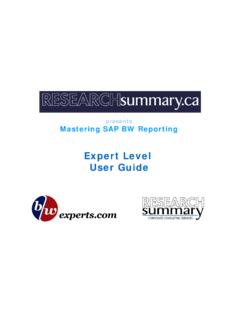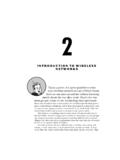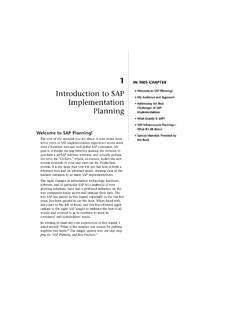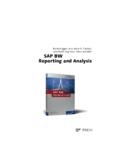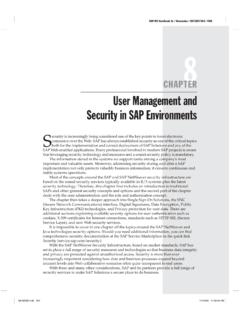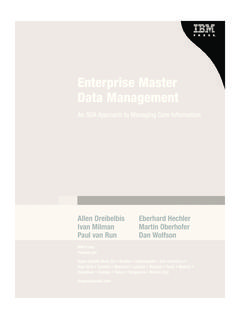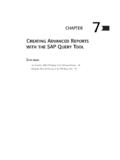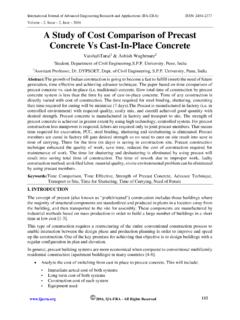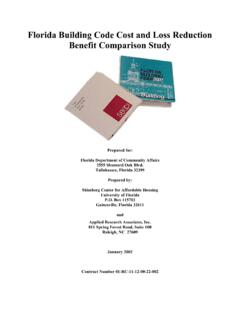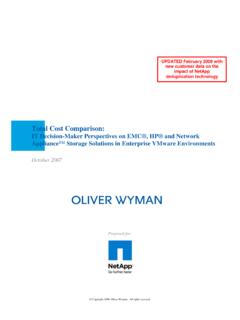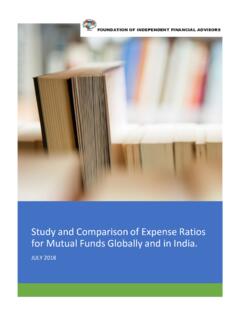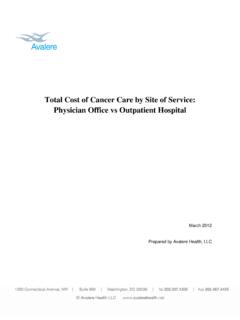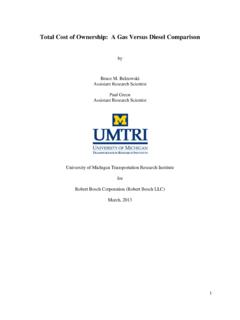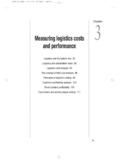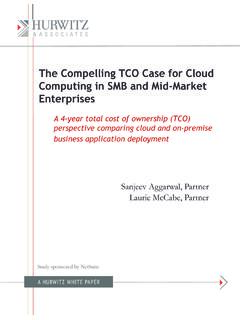Transcription of Total Cost Comparison - cdn.ttgtmedia.com
1 Copyright 2006, Mercer Management Consulting. All rights reserved. Prepared for: Total cost Comparison : IT Decision-Maker Perspectives on EMC , HP and Network Appliance Storage Area Network Solutions in Microsoft Exchange Environments June, 2006 Total cost Comparison : NetApp FAS, HP EVA and EMC CLARiiON in Exchange Environments Page 1 TABLE OF CONTENTS Executive Summary 2 Approach and Methodology 4 A. Mercer s Research Approach 4 B. Defining Total cost 4 C. Establishing a Standard Exchange Storage Environment 5 D. Typical Customer Exchange Storage Environments 6 Overall Findings 8 A. Total cost Comparison 8 B. Drivers of Observed cost Differences 8 Detailed Findings 10 A. Comparing Product Acquisition & Ongoing Vendor Costs 10 B. Internal Operational Costs 12 C. Downtime and Recovery Costs 15 Conclusion 18 Total cost Comparison : NetApp FAS, HP EVA and EMC CLARiiON in Exchange Environments Page 2 Executive Summary Mercer Management Consulting, a global strategy consultancy, was engaged by Network Appliance to conduct primary research with IT decision makers to determine the Total cost of acquiring, deploying, operating, and managing storage environments from various vendors to support Microsoft Exchange.
2 With email continuing its rapid growth and the increasing emphasis on messaging as a core business function, Microsoft Exchange is viewed by many organizations as a mission-critical application. In fact, in a recent survey, Mercer asked IT decision-makers to identify their most mission-critical application, and more cited Exchange than any other application. As one participant in this study stated, Exchange is the one application that our employees live in. If Exchange is down, our business prospects suffer. Clearly, selecting the right storage solution for this kind of environment and managing the cost of that storage over time are key challenges. This study was designed to identify what drives Total cost in Exchange storage environments and how EMC, HP, and Network Appliance storage area network (SAN) solutions compare in these environments. The findings included in this study are Mercer s, based exclusively on actual cost data provided by network storage administrators and IT managers from more than 20 mid-sized and large enterprises across various industries in Europe, Asia Pacific, and North America.
3 The key findings of this research include: The Total cost of a NetApp solution is lower than HP EVA and EMC CLARiiON in Exchange environments. Based on typical configurations and storage management policies, a Network Appliance solution is 30% less expensive than a typical CLARiiON solution and 36% less expensive than a typical HP EVA solution for the same size Exchange database in a fibre channel SAN environment. Figure 1 Relative cost Advantage of NetApp vs. Comparables1 Typical Exchange Deployments in Fibre Channel SAN environment NetApp FASEMC CLARiiON30%36% Total cost Index(Normalized to Overall Total cost of NetApp FAS FC SAN Solution)Source: Mercer Exchange Storage Total cost Comparison Interviews, May FASHP EVA100143156100 1 In this report, results are presented in an indexed format to better illustrate variations between the individual data storage solutions, where they exist.
4 The Total cost associated with a NetApp Fibre Channel SAN solution has been set to 100 and Total costs for other solutions are indexed to this. The approach to indexing has no impact on relative results. Total cost Comparison : NetApp FAS, HP EVA and EMC CLARiiON in Exchange Environments Page 3 The ongoing costs associated with managing Exchange storage make up the largest percentage of Total cost for all of the solutions evaluated and the largest source of Total cost advantage for Network Appliance over competitive solutions. As hardware controller and disk prices continue to fall, management and operation costs are becoming increasingly important as the driver of Total cost and represent 40%-50% of Exchange storage solutions. The NetApp software functionality and ease of use reduce the IT resources required to administer, monitor and manage the Exchange environment by 2x compared to EMC CLARiiON and HP EVA.
5 Furthermore, NetApp provides easy access to single mailbox recovery through its SMBR feature, helping restore individual emails in minutes instead of hours. The NetApp Snapshot technology leads to 2x faster recovery times from application errors based on typical deployments of NetApp FAS controllers versus EMC CLARiiON and HP EVA in an Exchange environment. study participants with NetApp environments typically create 7-8 Snapshot copies daily, allowing multiple near instantaneous point-in-time copies for customers to recover from. Conversely, typical EMC and HP deployments perform a full backup or clone, which requires more primary storage capacity and takes longer to recover, because performing multiple snapshot-equivalent copies was not justifiable from a cost -benefit basis in those environments. Total cost Comparison : NetApp FAS, HP EVA and EMC CLARiiON in Exchange Environments Page 4 Approach and Methodology A.
6 Mercer s Research Approach Network Appliance engaged Mercer Management Consulting to conduct primary research with IT managers and network storage administrators to determine the Total cost of acquiring, deploying, operating, and managing storage environments for Microsoft Exchange. Network Appliance commissioned this research with the belief that its storage solutions provided a Total cost advantage over key competitors. However, Mercer had complete autonomy over the research, data analysis and results. Participants in this study were recruited by Mercer for 60-90 minute structured interviews from two sources: NetApp customer and prospect lists and third-party panels of IT managers. Participants were targeted to provide diversity on a number of dimensions, including: Geographic region Industry Company size Number of active mailboxes Size of active mailboxes Primary vendor for Exchange storage Storage protocol used for Exchange storage This study employs the same methodology as Mercer s March 2006 Total cost Comparison in enterprise database environments.
7 The key differences between this study and the database study include: Microsoft Exchange as the target application: Data were gathered specifically for storage solutions used to support Microsoft Exchange. Inclusion of end-user support costs: study participants noted that user support was vital to Exchange. The need to recover mailboxes at the individual level is unique to messaging applications, and the frequency of single mailbox recovery has a definite impact on administration time used. Therefore, these end-user support costs, which are not relevant in a database environment, were factored into this study . B. Defining Total cost In the participant interviews, Mercer captured cost data across three categories: Product Acquisition & Ongoing Vendor Costs, Internal Operational Costs and Downtime and Recovery costs. Figure 2 provides more detail on the Total cost framework used with participants, which has the three primary elements: Product Acquisition & Ongoing Vendor Costs include all the up-front hardware, software, implementation and training costs associated with purchasing and implementing a storage solution for Exchange, as well as hardware and software support and maintenance agreements.
8 Total cost Comparison : NetApp FAS, HP EVA and EMC CLARiiON in Exchange Environments Page 5 Internal Operational Costs include all labor costs associated with the ongoing management and operation of the Exchange storage solution as well as all ongoing non-labor costs ( , facilities, environmental). Downtime and Recovery Costs include only those downtime costs that study participants could measure, specifically scheduled downtime and unscheduled downtime caused by application errors. Estimates of indirect business impact costs were not included in this study . Figure 2 Mercer s Approach to Total cost IntegrationInto theIT EnvironmentProductAcquisitionStorage Device Specific Costs Total Business Impact Scope of the CostsActivities Costs associated with the purchase & implementation of a storage solution for Microsoft Exchange Vendor costs necessary for the ongoing management, operation, and availability of this storage solutionProduct Acquisition/Ongoing Vendor CostsInternal Operational Costs All internal costs (both labor and non-labor)
9 Required for the acquisition, mgmt, operation and availability of a storage solution for Microsoft ExchangeDowntime/Recovery Costs The quantifiable effect of a storage solution on the IT infrastructure and financial implications for the business Unscheduled downtime due to application errors Scheduled MaintenanceIntegrationInto theIT EnvironmentProductAcquisitionStorage Device Specific Costs Total Business Impact Scope of the CostsActivities Costs associated with the purchase & implementation of a storage solution for Microsoft Exchange Vendor costs necessary for the ongoing management, operation, and availability of this storage solutionProduct Acquisition/Ongoing Vendor CostsInternal Operational Costs All internal costs (both labor and non-labor) required for the acquisition, mgmt, operation and availability of a storage solution for Microsoft ExchangeDowntime/Recovery Costs The quantifiable effect of a storage solution on the IT infrastructure and financial implications for the business Unscheduled downtime due to application errors Scheduled Maintenance C.
10 Establishing a Standard Exchange Storage Environment In order to ensure a consistent and accurate Total cost Comparison , participants were shown an Exchange storage architecture diagram, Figure 3, and asked to limit the scope of their answers to the storage elements described as relevant cost areas within the diagram (shaded in grey). The baseline environment for this study included a two-node active/passive cluster of Exchange servers connected to the primary storage through either Fibre Channel or iSCSI The costs of the servers, Exchange licenses, switches and HBAs, and secondary storage were excluded from this analysis. Data protection is achieved at two levels within the relevant cost areas. At the primary storage layer, disk resiliency is achieved through RAID protection. At the data protection layer, low- cost drives are used to mirror the data, which can be used for disaster The disks required for this purpose directly 2 This study found that the relative Total cost performance of the solutions evaluated were consistent for both Fibre Channel and iSCSI SAN environments.
